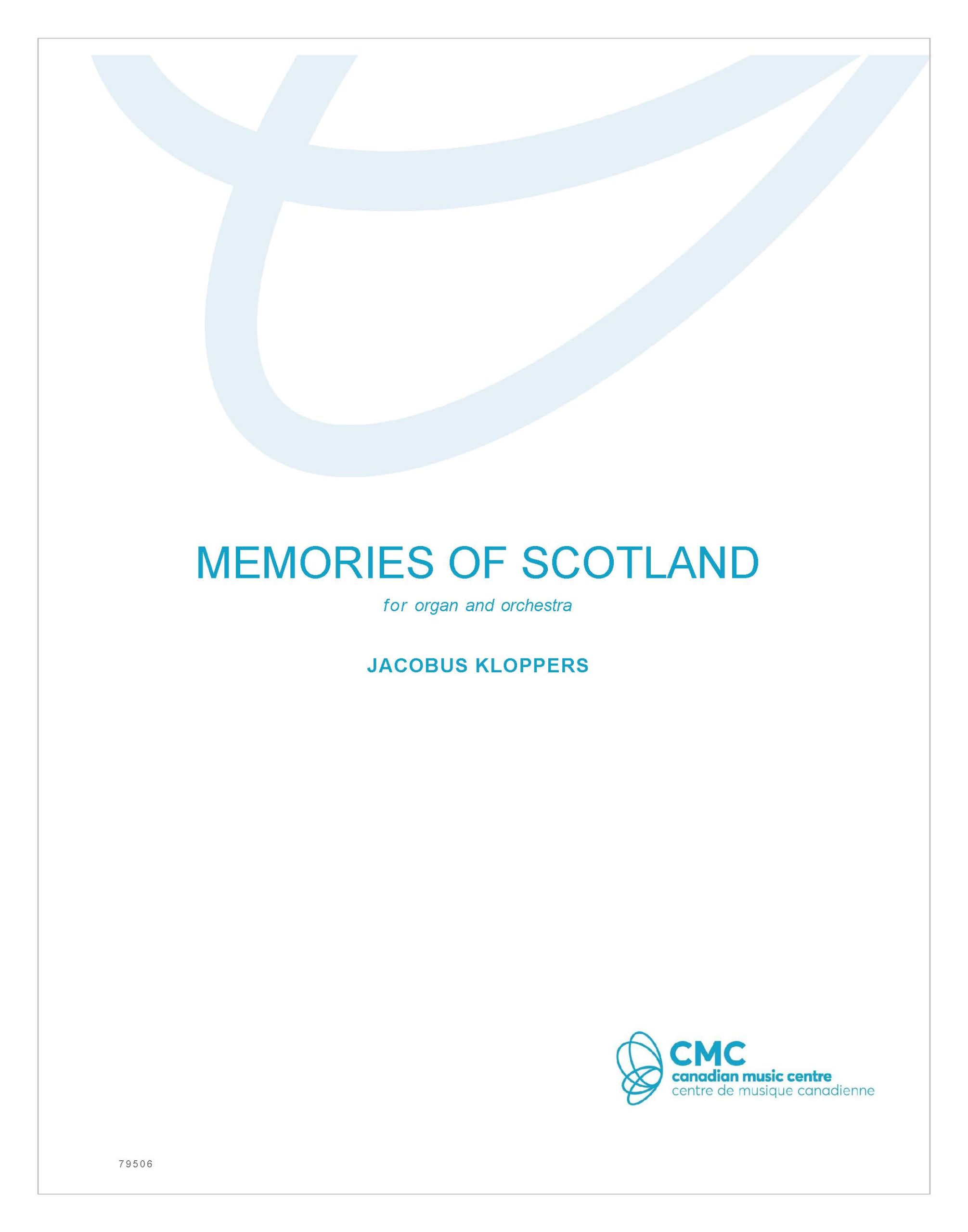This suite is a transcription for Organ and Orchestra of my 2003/05 Celtic Impressions for Organ Solo. When
Gayle Martin (New Brunswick, Canada) approached me to write a Celtic Suite for Organ, the possibilities seemed
infinite due to the wide range of meanings and associations with the word “Celtic”, old and new. After discussions
with her, I decided to focus more specifically on Scotland, its people and music: My own impressions from visits
to Scotland, its beauty and ruggedness, its music, energy, colour, a country full of memories of courage, struggle,
joy and pain. Its folk music (songs and dances) – even if there is a borrowing and re-use of materials in various
Celtic regions – captures something of the essence of this rich culture and forms a natural source for the Celtic
Impressions. From the Scottish material provided by Gayle Martin I selected six pieces (2 Strathspeys, 2 Airs, 2
Jigs) as basis for the work in 2003. The two Marching Songs movements were added in 2005. This traditional folk
music was naturally stylized in an organ idiom. I decided to keep the organ in the orchestral version (2021) due to
its unique timbres. At the same time, the orchestra lends to the work its own beautiful colours, subtlety, and
grandeur.
The first movement’s main themes are loosely based on two reels (Strathspeys), Over the muir among the heather
(origin unknown) and Mrs. Fordyce of Ayton’s Strathspey (by Robert Mackintosh, late 1700’s). The movement is
in Sonata-form with a slow introduction and concludes with the two themes combined in a semi-contrapuntal
manner.
Two Airs from the Southern Uplands, On Ettrick Banks (words from Ramsay’s “Tea-table Miscellany”, 1724; the
Air, from the Orpheus Caledonius, 1725) and Ae Fond Kiss (famous poem of Robert Burns, 1792; melody, from a
later period), inspired the slow movement, which is in a Rondo form. Both airs have a haunting quality of the
bitter-sweet of love: On Ettrick Banks, of two lovers in the early evening glow on the banks of the Ettrick River
envisioning a promising future; Ae fond kiss, of the painful parting of two lovers.
The third movement Rondo is a kind of Scherzo and makes use of two Jigs: Greensleeves (Scottish version of 16th
Century Jig?) and Dunkeld House (Niel Gow, late 18th century).
The fourth, final movement (written after the premiere of the 3-movement work by Gayle in January 2004), is a
Toccata in three sections based on two Scottish Marching songs, Scotland the Brave and Loch Lomond, the
final section being a combination of both melodies.
Organ Performance suggestions: Registration markings are intended to be a general guide for the intended
timbres. Manuals can be reversed if the desired stop colours are only available on the alternate manual. Suggested
pitch stops (4’, 2’ etc) and textures (e.g., 8’+2’, 8” + Cymbal, etc.) should be observed for the desired textural
effect. For the sake of clarity, manual 16’ stops should be avoided in the Full Organ sections, except where
prescribed.
Performance notes regarding shakes and grace-notes:
All shakes ( ) begin on the upper note and on the beat. They are one quarter-note in duration and are to be
performed expressively.
All appoggiature ( or ) begin on the beat, may continue with a shake (where indicated), and are to be
performed expressively.
All acciaccature ( ) begin before the beat.
Strings Performance note: throughout, all double voicings are divisi. There are no double-stops.
Acknowledgements:
• Gayle Martin, currently Associate Professor (Organ, Musicianship, Conducting), Mount Allison, NB, for
commissioning the 2003 project and for her splendid Organ CD “Celtic Impressions”, 2005
• The Marjorie Young Bell Fine Arts and Music Fund at Mount Allison University, Sackville, New
Brunswick, for underwriting Celtic Impressions in 2003.
• Trent Worthington for his input and exceptional care in transcribing the orchestral version into a digital
PDF, 2022
Jacobus Kloppers, Edmonton 2022

